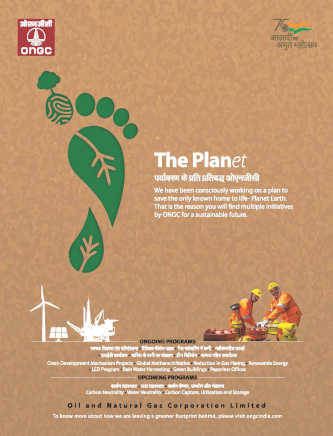India is making steady strides in achieving its target of attaining 175 GW of renewable energy by 2022. But while plenty of attention is being paid to creating infrastructure, financing green power projects and moving away from coal energy, perhaps some thought should also be given to ensuring that labourers of the coal sector are not made redundant. A new study published in the journal Environmental Research Letters [read here] examines the scope and steps required to move mining related jobs to the renewable energy sector. It focused on the world’s top coal-producing countries: China, India, the US, and Australia, accounting for over 70 per cent of global coal production. The study first estimated the local solar and wind capacity required to be built in coal mining areas in these countries to enable local miners to transition to solar or wind jobs (since reports suggest these sectors represent over half of today’s renewable energy jobs). Next, it conducted an analysis to assess whether there are suitable solar and wind power resources in the local areas around coal mines. The study then calculated the total national solar and wind capacity required to transition all miners living in suitable areas to such jobs. Research showed that nearly all coal mining areas in India are suitable for solar power but not for wind power. As per the data, 485,000 coal miners produce over 700 million tonnes of coal annually, with production being concentrated in Chhattisgarh, Jharkhand, Orissa, Madhya Pradesh and Telangana. The study notes that “1.96 GWe of solar power capacity would need to be installed in each local coal mining area to transition all coal miners to local solar jobs.” That translates into an additional 960 GW of capacity on the national level. “This would mean increasing the current capacity by nearly 37 times (from today’s capacity of 27 GWe)”. Nearly all Australian coal mines surveyed also showed suitability for solar power, while a majority of U.S. mines (62 per cent) fit the bill. However, only 29 per cent of Chinese mines showed suitability. Speaking on the viability of moving jobs from coal to solar, Sunil Jain, CEO, Hero Future Energies, said: “Indian economy has to evolve as a wind/solar dominated power sector. In my opinion this would take nearly 10 years or more to become a reality. When the country has embarked on a target of 450 GW of renewables by 2030, this sector would be hiring minimum 5 million work force. This transition is likely to demand large scale re-training and re-deployment of labour from mining and thermal power sector.” Ashish Khanna, president – renewables, Tata Power Company, believes that rather than transitioning completely from thermal power, India should develop a system to allow coal and renewable power to co-exist. “In this co-existing environment, coal based jobs will not be required to be replaced, however all most all new employment opportunities will be coming from project execution & operations renewable projects,” Khanna said. “Once our targets of >100 GW of renewable energy will be achieved, operating renewable plants will be multi-billion dollar business. Over the last two decades we have already witnessed the emergence of India as world leader in IT services, considering the adoption of technology, criticality of technical services, especially in renewables, and availability of technical workforce in our country, I am confident that in this decade India will not only provide massive employability but will emerge as world leader in operating services for renewables,” he added. As India continues to struggle with growing unemployment rates—7.7 per cent in December 2019, slightly higher than November 2019 figures, as reported by the Centre for Monitoring Indian Economy [more here]—studies such as ‘Solar has greater techno-economic resource suitability than wind for replacing coal mining jobs’ serve as a reminder to ensure holistic, sustained future employment growth. In a column for Business India [read here], Neeraj Kuldeep, programme associate at the Council on Energy, Environment and Water, argued that a sustainable energy sector needs a sustainable workforce. “India’s energy transition promises jobs but needs a trained workforce,” Kuldeep wrote while discussing the challenges facing hiring in the renewable energy sector. Factors such as constantly changing policies and investments, remote project locations, a lack of skilled workers and limited transferability of skills can prove to be hurdles in finding employees. Kuldeep offered solutions including generating greater demand certainty, promoting distributed renewables, incorporating the latest technology in training workers on site and localising production of infrastructure components.
-

India needs to step up solar production to support labour from phased out coal industry. Credit: ESA_events























